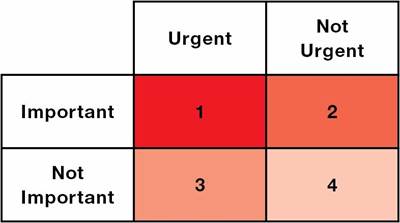6 Ways to Reduce Outstanding Receivables
Are you effectively following up on your receivables?
As a small business owner, I recognize the importance of timely payments from my customers. Late payments are frustrating, and follow-up can be time-consuming. For some, asking for payment is one of their most dreaded tasks. There are certainly reasons for late payments such as misplaced invoices (they’re still “in the pile”), cash flow constraints (your customers waiting for payment from their customers) and even misunderstanding of actual payment terms. Yet it is important to have a process in place for dealing with late payments. Here are six often overlooked steps you can take to reduce your average accounts receivable days outstanding.
1. Send the invoice immediately.
As simple as this sounds, it is surprising how long it takes some businesses to send invoices to their customers. Unless specified in terms previously established with the customer, an invoice should be dated and sent the day a service is performed. This lets customers know that you are prompt with your invoicing process. The sooner you invoice, the sooner you will receive payment.
2. Be clear about your payment terms on the invoice.
Invoices lacking payment expectations actually offer customers an unlimited time to pay. Make these expectations clear, whether it be days after invoice date or a defined due date. Even the term “due upon receipt” can be vague, leaving too much room for customer interpretation. If you can charge interest on late payments, this should be spelled out on the invoice.
3. Send a gentle reminder to the customer before the invoice due date.
This is a step to be considered, especially if a customer has a history of late payments. Employing this step shows your customer that you have an invoice tracking process and are willing to keep the customer advised of the status of unpaid invoices. This technique is frequently used by larger companies, especially if you make payments using an online process. One rationale for doing this is that it’s not smart to wait for a late payment to occur before contacting a customer.
4. Initiate action as soon as the invoice is overdue.
The timing of this action may be different from company to company, but certainly any invoice that is delinquent by a week is worthy of follow-up action. An short email can serve this purpose. It should include details such as the invoice number, amount due and due date along with a copy of the original invoice in case it was lost. A professional, non-threatening correspondence provides a clear reminder of what the customer owes and when they owed it. If possible, it should be directed to a specific person rather than a department.
5. If the invoice is still unpaid, switch from written correspondence to a phone call.
Sometimes people change roles in an organization or email addresses change without any notification to outside organizations. A phone call will uncover if these are the reasons for payment delays while connecting you with someone in a position to take action. The phone call, like any previous correspondence, should be courteous and professional. Anyone making this call should not show anger or frustration. Late payments are almost never a personal affront or meant to be an insult to you or the business. In fact, delinquent customers often are busy and may have simply forgotten about the invoice. It’s just business.
6. Further interactions regarding overdue invoices.
If further contact with the customer is needed, alternate between written correspondence and phone calls. Listen to the causes for late payment and try to be helpful when you can. Be sure to document all phone conversions and keep email correspondence as a record of your attempts to secure payment. This will prove helpful if it eventually becomes necessary to move toward third-party collection action. Unfortunately, studies have shown that the longer you wait for payment, the less likely you are to receive it. According to Anytime Collect, a provider of accounts receivable software, 26% of invoices over three months old are uncollectable. This increases to 70% at six months and 90% at 12 months — not an encouraging prospect for the severely delinquent.
Of course, as helpful as the above tips will be in reducing your accounts receivable days outstanding, relationships you establish with customers will have an impact on which you choose to employ. Your best customers will likely be given more leeway on late payments. Just be sure to pay attention to longer-than-normal payment trends. Such trends may foreshadow trouble ahead, and you don’t want to be caught by surprise. It's good practice to inquire and follow up when appropriate.
Read Next
Time Management – How Effective are You?
Perhaps former President Eisenhower’s method for prioritizing activities can help you, too.
Read MoreCreative Ways to Make Things Easier
“Visuals” not only help eliminate waste, but can also have additional positive impact on a company’s operations.
Read More








.png;maxWidth=300;quality=90)






.png;maxWidth=300;quality=90)




